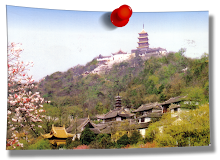

 Prague is the capital and largest city of the Czech Republic. Its official name is Hlavní město Praha, meaning Prague, the Capital City. Situated on the River Vltava in central Bohemia, Prague has been the political, cultural, and economic centre of the Czech state for more than 1.100 years. The city proper is home to more than 1,2 million people, while its metropolitan area is estimated to have a population of over 1,9 million.
Prague is the capital and largest city of the Czech Republic. Its official name is Hlavní město Praha, meaning Prague, the Capital City. Situated on the River Vltava in central Bohemia, Prague has been the political, cultural, and economic centre of the Czech state for more than 1.100 years. The city proper is home to more than 1,2 million people, while its metropolitan area is estimated to have a population of over 1,9 million.Since 1992, the extensive historic centre of Prague has been included in the UNESCO list of World Heritage Sites. Nicknames for Prague have included "the mother of cities" (Praga mater urbium, or "Praha matka měst" in Czech), "city of a hundred spires" and "the golden city". The name Prague comes from an old Slavic root, praga, which means “ford”, referring to the city's origin at a crossing of the Vltava River. This root is found in other toponyms in the region. For example, a district of Warsaw bears the name of Praga. The native name of the city, Praha, is also related to the modern Czech word práh, which means "threshold". A popular etymology connects the name of the city to the fact that the city is located on the threshold of the Slavic and German worlds.
A legendary etymology connects the name of the city with Libuše, prophetess and mythical founder of the Přemyslid dynasty. She is said to have ordered the city to be built where a man stood on the threshold of his house. Others finally, fascinated by the magic character of the city, affirm that Prague lies on the threshold of a door of access to other worlds or other dimensions. The history of Prague spans thousands of years, during which time the city grew from the Vyšehrad Castle to the multicultural capital of a modern European state, the Czech Republic.































No comments:
Post a Comment